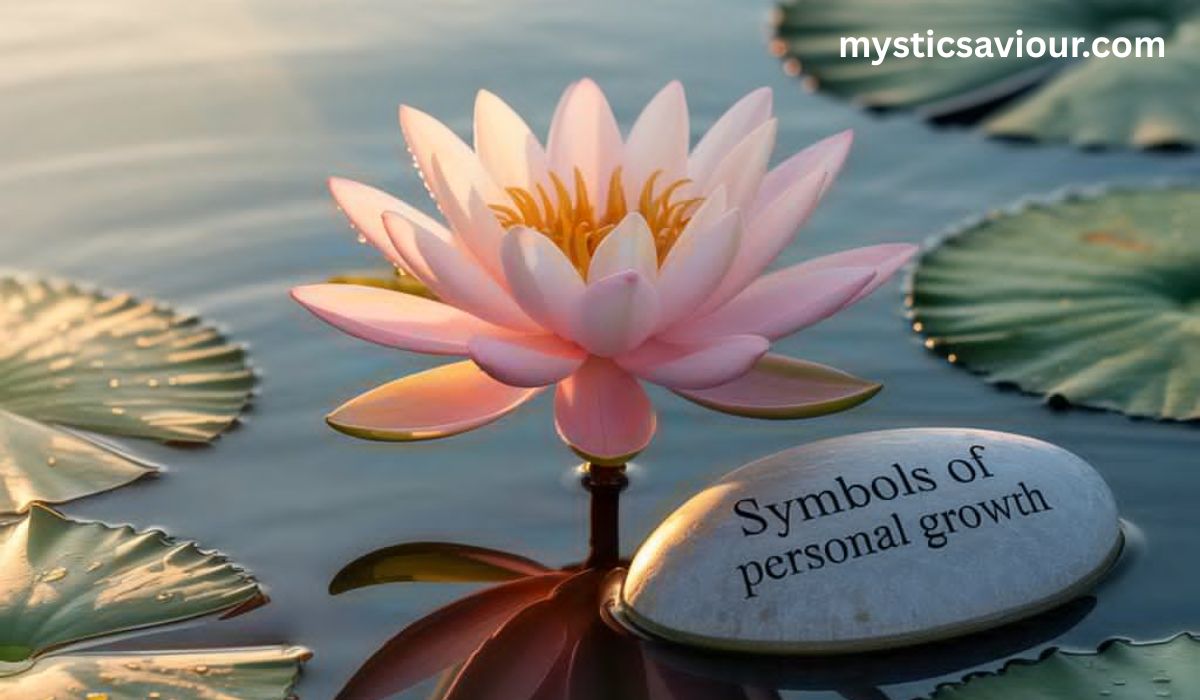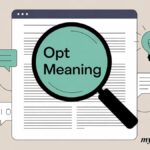Symbols of Personal Growth: 18 Signs of Evolution and Self-Discovery are visual or conceptual representations that embody the journey of inner transformation, self-awareness, and personal development. Each symbol reflects a stage or aspect of growth—whether it’s overcoming adversity, embracing change, or striving toward higher goals. These powerful emblems offer insight and meaning as individuals evolve mentally, emotionally, and spiritually.
In a world constantly pushing for progress, we often seek deeper understanding and purpose. Symbols speak a universal language, evoking emotion and reflection. They don’t just decorate our path—they define it, turning everyday challenges into milestones of growth and transformation.
This collection of 18 symbols captures the essence of personal evolution. From the resilience of the phoenix to the clarity of the compass, each one inspires strength, renewal, and direction. By understanding their meanings, you can embrace your journey with greater awareness, purpose, and motivation.
The Psychology Behind Growth Symbols
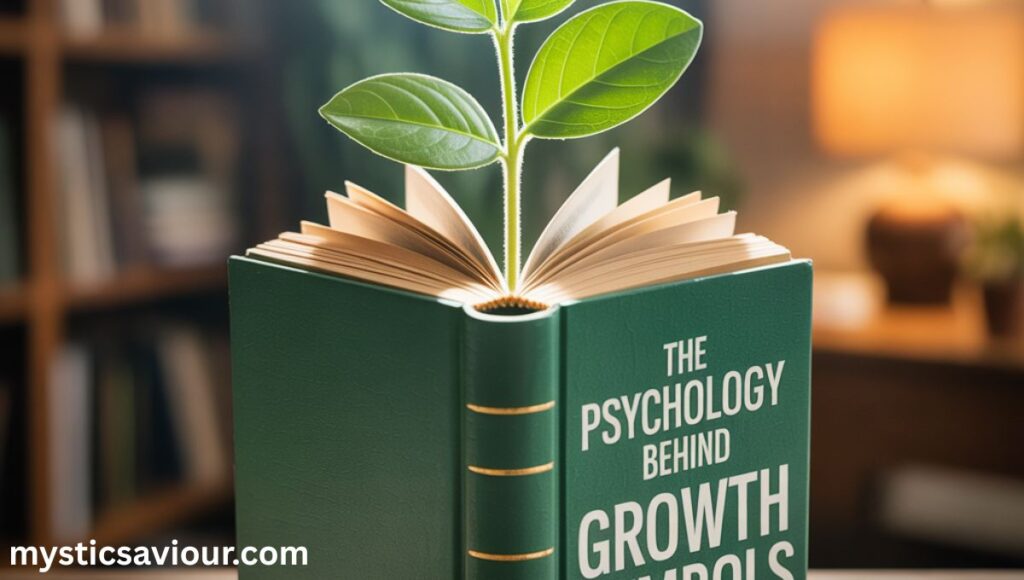
Why Your Mind Craves Visual Metaphors
Your brain processes symbolic meaning 60,000 times faster than text. When you see a tree, your neural networks don’t just recognize bark and leaves—they instantly connect to concepts of resilience, growth, and seasonal change. This rapid-fire mental clarity happens because symbols activate multiple brain regions simultaneously.
Carl Jung’s research into the collective unconscious revealed that certain universal symbols appear across all human cultures without direct contact. The phoenix emerges in Greek, Chinese, and Native American traditions independently. The spiral appears in Celtic art, Aboriginal dreamtime stories, and modern DNA imagery. These aren’t accidents—they’re hardwired into human consciousness.
Neuroscientist Dr. Antonio Damasio discovered that emotional memories attached to symbols create stronger neural pathways than purely logical information. This explains why a simple compass tattoo can provide more motivation during difficult decisions than reading a dozen self-help books.
The Difference Between Decoration and Transformation
Not all symbols carry transformative power. The difference lies in personal resonance versus trendy adoption. Authentic transformation symbols emerge organically from your experience, not from Instagram aesthetics. They choose you as much as you choose them.
Real transformation happens when symbols become behavioral triggers. The anchor on your keychain reminds you to stay grounded during workplace chaos. The sunflower artwork in your bedroom encourages you to seek light during seasonal depression. These aren’t just pretty objects—they’re personal development tools disguised as everyday items.
The Foundation Symbols: Rooted Strength
Tree: Rooted Resilience
The tree stands as nature’s perfect metaphor for personal growth. Its roots dig deep while branches reach skyward, mirroring how authentic development requires both grounding and aspiration. Ancient wisdom traditions from the Norse Yggdrasil to the Buddhist Bodhi Tree recognize trees as bridges between earth and heaven.
Oak trees can live over 1,000 years, weathering countless storms while growing stronger with each challenge. Their resilience comes from flexibility—they bend without breaking. This symbolic meaning translates directly to human emotional development. Your strongest growth often happens after your most difficult seasons.
Modern applications include using tree imagery during meditation to visualize your root system (values, relationships, core beliefs) and your canopy (goals, dreams, contributions). Many successful entrepreneurs report breakthrough moments occurring during forest walks, suggesting trees activate creative problem-solving networks in the brain.
Mountain: Ascending Consciousness
Mountains represent the spiritual journey toward higher consciousness. From Moses receiving commandments on Sinai to Buddha’s enlightenment in the Himalayas, elevated locations symbolize spiritual growth and expanded perspective. The mountain doesn’t just sit there—it challenges climbers to discover their inner strength.
Peak experiences, a term coined by psychologist Abraham Maslow, occur when individuals transcend ordinary consciousness and glimpse their full potential. These moments often happen in natural settings, particularly at elevation. The mountain reminds us that overcoming challenges leads to panoramic views impossible from ground level.
Practical application involves identifying your mountain—that significant challenge requiring courage and strength to overcome. Maybe it’s starting your own business, healing from trauma, or learning a new skill. The mountain teaches patience; you don’t teleport to the summit. Each step builds strength for the next.
Book: Wisdom Unfolding
The book symbolizes expanding awareness through knowledge and self-reflection practices. Unlike passive consumption, transformative reading involves active engagement with ideas that challenge existing beliefs. Your life story unfolds like chapters, with plot twists, character development, and thematic evolution.
Maya Angelou described her autobiography series as “writing her way to freedom.” Each book represented another layer of self-discovery and healing. The symbolic meaning extends beyond literal books to include any medium that expands consciousness—podcasts, documentaries, conversations with wise mentors.
Modern relevance includes recognizing that you’re simultaneously reading and writing your story. Self-awareness grows when you become conscious of recurring themes in your life narrative. Are you the hero, victim, or side character in your own story? The book symbol empowers you to grab the pen and rewrite limiting chapters.
Direction and Purpose Symbols
Ladder: Systematic Elevation
The ladder represents methodical self-improvement through consistent effort. Unlike sudden breakthroughs, ladder climbing requires one rung at a time. Jacob’s biblical dream of angels ascending and descending a heavenly ladder established this universal symbol as a bridge between human and divine consciousness.
Research by Dr. Angela Duckworth on grit reveals that sustained effort over time (ladder climbing) predicts success more accurately than natural talent. The ladder reminds us that personal development happens through daily choices, not dramatic gestures.
Professional applications include skill building, career advancement, and habit formation. Each completed project, learned skill, or positive habit represents another rung. The ladder teaches patience with process and celebration of incremental progress.
Compass: Internal Navigation
The compass points toward your true north—authentic values and purpose. While GPS tells you where to go, a compass helps you understand your direction relative to magnetic north. In personal growth, this magnetic pull represents your deepest convictions and core identity.
Viktor Frankl, Holocaust survivor and psychiatrist, wrote that meaning provides direction through any circumstance. His compass pointed toward service and love, even in concentration camps. This inner strength enabled survival when external circumstances offered no hope.
Digital age applications become crucial as information overload creates constant distraction. Your internal compass helps distinguish between urgent and important, between others’ expectations and your authentic path. Regular mindfulness practices calibrate this inner navigation system.
Phoenix: Death and Rebirth
The phoenix embodies complete transformation through necessary endings. This mythical bird burns itself to ashes before rising renewed and strengthened. Unlike gradual change, phoenix moments require courage to release your old identity completely.
Career pivots often follow phoenix patterns. A successful lawyer might burn their partnership to become a teacher, or a corporate executive might immolate their six-figure salary to start a nonprofit. The phoenix reminds us that new beginnings sometimes require the destruction of what came before.
Psychological research on post-traumatic growth shows that individuals who navigate severe challenges often emerge with enhanced resilience, deeper relationships, and clearer purpose and direction. The phoenix doesn’t just survive the fire—it transforms because of it.
Flow and Movement Symbols
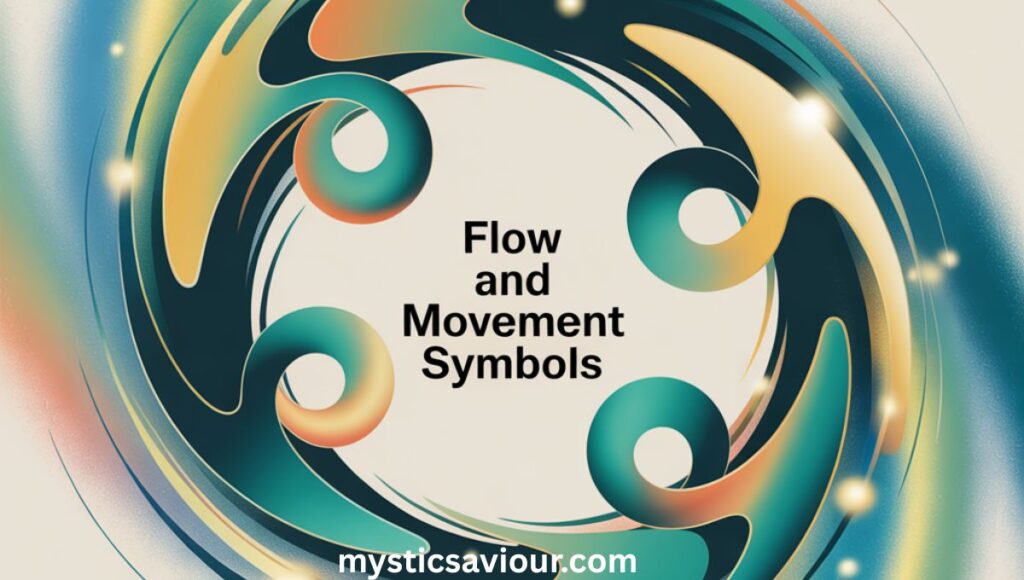
Spiral: Cyclical Progress
The spiral appears everywhere in nature—from DNA helices to galaxy formations. Unlike circles that return to starting points, spirals progress while maintaining cyclical patterns. Your personal growth follows similar patterns, revisiting themes at deeper levels.
Fibonacci spirals demonstrate mathematical perfection in natural growth patterns. Sunflower seeds, nautilus shells, and hurricane formations all follow this precise progression. The spiral teaches that apparent repetition represents evolution to higher levels of understanding.
Life transitions often spiral through similar emotional stages—denial, anger, bargaining, depression, acceptance—but each cycle brings greater wisdom. The spiral symbol helps normalize this process and maintain faith during difficult passages.
Star: Illuminated Path
Stars have guided travelers for millennia, providing fixed reference points in vast darkness. Unlike planets that wander, true stars maintain consistent positions. In personal development, star symbols represent core values and principles that remain constant despite changing circumstances.
North Star navigation requires understanding your position relative to this fixed point. Your values function similarly—they provide direction when life circumstances shift unpredictably. The star reminds you that inspiration comes from alignment with these unchanging principles.
Modern applications include identifying your guiding values and using them as decision-making criteria. When faced with choices, ask which option aligns with your star values. This symbolic meaning transforms abstract concepts into practical navigation tools.
Road: Journey Over Destination
The road represents life transitions and the understanding that travel changes the traveler. Robert Frost’s famous poem about diverging paths captures this symbolic meaning—choices shape identity as much as destinations do.
Pilgrimage traditions worldwide recognize that spiritual journeys happen through movement and challenge. The Camino de Santiago, Vision Quests, and Hajj all use physical roads to catalyze internal transformation. The road teaches that self-discovery occurs through engagement with uncertainty.
Career and relationship paths follow similar patterns. The road less traveled often leads to greater personal growth than comfortable highways. Milestones of change mark progress, but the space between markers contains the real awakening.
Connection and Support Symbols
Bridge: Connecting Divided Parts
Bridges span divides between separated territories. In personal growth, they represent integration of opposing aspects within yourself—logic and intuition, strength and vulnerability, independence and connection. Emotional healing often requires building bridges between past trauma and present possibility.
Architectural bridges demonstrate engineering principles applicable to psychological work. Strong foundations on both sides, flexible materials that bend without breaking, and careful attention to stress points. Bridge building in relationships follows similar engineering.
Cultural bridges become essential in our globally connected world. The bridge symbol reminds us that connection requires understanding and respect for differences while finding common ground.
Sunflower: Following Light
Sunflowers exhibit heliotropism—they track the sun’s movement across the sky throughout the day. This natural behavior provides a perfect metaphor for maintaining positive focus during difficult periods. The sunflower reminds us that orientation toward light is a choice requiring constant adjustment.
Vincent van Gogh’s sunflower paintings emerged during his most creative and turbulent period. The sunflower became his symbol of hope and artistic breakthrough despite personal struggles. This symbolic meaning demonstrates that inspiration often blooms in unlikely soil.
Seasonal depression research shows that light exposure significantly impacts mood and energy. The sunflower symbol encourages practical light-seeking behaviors—morning walks, south-facing windows, light therapy boxes—while maintaining metaphorical orientation toward positivity.
Clock: Divine Timing
The clock represents two types of time—chronos (measurable minutes) and kairos (meaningful moments). Personal growth operates on kairos time, where breakthrough insights arrive according to readiness rather than schedule. The clock teaches patience with divine timing.
Biological rhythms govern everything from sleep cycles to seasonal mood changes. The clock reminds us to honor natural rhythms rather than forcing artificial timelines. Transformation has its schedule that doesn’t always align with external expectations.
Modern anxiety often stems from chronos obsession—constantly checking time, rushing through experiences, impatience with process. The clock as a growth symbol encourages kairos awareness—recognizing sacred moments within ordinary time.
Integration and Wholeness Symbols
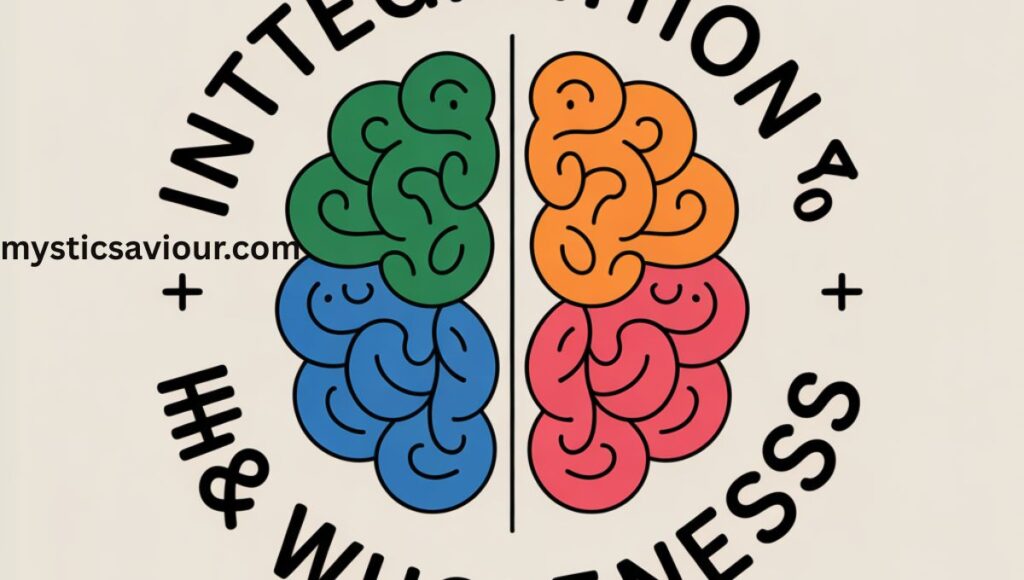
Puzzle Piece: Finding Your Place
The puzzle piece represents your unique contribution to the larger picture. Unlike fitting in (changing yourself to match others’ expectations), finding your place means discovering where your authentic shape belongs in the cosmic design.
Neurodivergent perspectives on puzzle piece imagery vary. Some celebrate uniqueness while others prefer symbols suggesting wholeness rather than missing parts. The key lies in personal resonance rather than universal interpretation.
Career fulfillment often involves finding work that matches your natural talents and interests—discovering where your puzzle piece fits in the economic landscape. The puzzle piece encourages authenticity over conformity.
Arrow: Focused Intent
Arrows demonstrate the power of directed energy. Zen archery traditions teach that successful shooting requires complete presence and release of attachment to outcomes. The arrow symbolizes focused motivation combined with surrender to results.
Goal-setting research shows that specific, measurable objectives increase achievement rates significantly. However, the arrow reminds us that rigid attachment to outcomes can create suffering. Aim clearly, then release completely.
Modern applications include identifying your primary target while remaining flexible about methods. The arrow teaches that mental clarity about direction matters more than controlling every variable along the path.
Pearl: Beauty from Irritation
Pearls form when oysters coat irritating particles with layers of nacre. This transformation of discomfort into beauty provides hope that current challenges might become future treasures. The pearl validates that emotional development often emerges from difficulty.
Kintsugi philosophy from Japan emphasizes highlighting breaks with gold rather than hiding damage. Broken pottery becomes more beautiful after repair. The pearl carries similar wisdom—your scars might become your greatest strengths.
Post-traumatic growth research documents how individuals who process trauma thoroughly often develop enhanced resilience, deeper empathy, and clearer purpose. The pearl reminds us that pressure creates treasures, not just problems.
Stability and Flow Symbols
Anchor: Grounded in Values
Anchors provide stability during storms while allowing controlled movement. Unlike being stuck, being anchored means remaining connected to core principles while adapting to changing conditions. The anchor represents stable inner strength amid external chaos.
Maritime metaphors appear throughout spiritual traditions because life resembles ocean navigation more than highway driving. The anchor teaches that security comes from internal stability rather than external control.
Modern nomadism and remote work require portable anchors—values, practices, and relationships that provide grounding regardless of location. The anchor evolves from physical to psychological stability.
Koi Fish: Upstream Determination
Koi fish swimming upstream eventually transform into dragons according to Japanese legend. This symbolic meaning celebrates persistence through resistance. The koi fish reminds us that swimming against the current requires strength but leads to transformation.
Cultural currents often flow toward conformity, consumption, and comfort. Swimming upstream might mean choosing creativity over security, authenticity over approval, or service over self-interest. The koi fish validates countercultural choices.
Waterfall moments represent breakthrough points where sustained effort suddenly becomes effortless flow. The koi fish teaches that upstream swimming eventually reaches calmer waters at higher elevations. Symbols of personal growth
Cherry Blossom: Embracing Impermanence
Cherry blossoms bloom magnificently and briefly, embodying the Japanese concept of mono no aware—bittersweet appreciation of transient beauty. The cherry blossom teaches that impermanence enhances rather than diminishes life’s preciousness.
Death acceptance paradoxically increases life appreciation. The cherry blossom reminds us that seasons change, relationships evolve, and opportunities pass. This awareness motivates presence and gratitude.
Seasonal cycles mirror personal growth patterns—dormancy, budding, blooming, fruiting, and release. The cherry blossom helps normalize life’s rhythms and find beauty in every phase.
Activating Symbolic Power in Daily Life
Creating Your Symbol System
Choose symbols based on authentic resonance rather than aesthetic appeal. Notice which images repeatedly appear in your life or capture your attention during significant moments. These organic inspirational signs often carry more power than deliberately selected ones.
Cultural appropriation concerns require sensitivity when adopting symbols from traditions outside your heritage. Focus on universal symbols or seek proper understanding and permission when drawn to culture-specific imagery.
Testing effectiveness involves observing whether chosen symbols influence behavior and emotional states. Effective transformation symbols create measurable changes in decision-making, motivation, and self-awareness.
Practical Integration Methods
Vision boards work when they trigger action rather than passive wishing. Effective boards include specific next steps alongside aspirational images. The visual representation of growth should connect dreams to daily choices.
Permanent commitments like tattoos require careful consideration. Choose symbols that represent core values rather than temporary goals. Consider how meanings might evolve as you continue growing.
Environmental cues strategically placed throughout living and working spaces create consistent reminders. A compass on your desk, anchor jewelry, or phoenix artwork provides daily inspiration without conscious effort.
Beyond Individual Growth
Collective Symbols and Community Building

Shared symbols unite families, organizations, and movements around common values. The bridge represents connection, the tree symbolizes growth, and the star provides shared direction. Collective symbols create belonging while honoring individual expression. Symbols of personal growth
Generational translation helps bridge understanding between different age groups who resonate with different symbolic imagery. Parents might use tree metaphors, while teenagers connect with arrow symbolism for the same growth concept.
When Symbols Lose Power
Symbols sometimes outgrow their usefulness as you evolve. The ladder that motivated early career climbing might feel limiting when you crave more spiritual growth. Reflection helps distinguish between temporary resistance and genuine evolution.
Symbol addiction occurs when collecting inspirational signs replaces taking meaningful action. Authentic transformation requires embodying symbolic meaning through behavior change, not just surrounding yourself with meaningful imagery.
Your Symbol Speaks
These 18 symbols of personal growth offer a language for self-discovery that transcends cultural boundaries and speaks directly to your subconscious wisdom. From the tree’s rooted resilience to the cherry blossom’s graceful acceptance of change, each symbol carries millennia of human experience distilled into visual metaphors that guide transformation. Symbols of personal growth
Your journey toward self-awareness and emotional development doesn’t require adopting all these symbols. Instead, notice which ones illuminate your current path and challenges. Perhaps the phoenix calls to someone navigating major life transitions, while the anchor resonates with someone seeking stability amid chaos.
Personal growth happens when symbols become more than decoration—when they transform into daily reminders of your capacity for courage and strength, new beginnings, and continuous awakening. The compass points you toward authentic purpose and direction. The spiral teaches patience with cyclical progress. The pearl reminds you that current irritations might become future treasures.
Which symbol speaks to your soul today? Let it guide you toward the transformation that awaits just beyond your current horizon. Your evolution continues with each conscious choice to align with the symbolic meaning that calls you forward into self-discovery.
Take action: Choose one symbol that resonates most strongly right now. Place a visual representation somewhere you’ll see it daily. Notice how this simple personal development tool begins influencing your thoughts, decisions, and motivation. Your symbols are waiting to unlock the potential that’s been there all along. Symbols of personal growth
Table: Quick Symbol Reference Guide
| Symbol | Primary Meaning | Best For | Action Step |
|---|---|---|---|
| Tree | Rooted resilience | Building foundations | Ground values daily |
| Mountain | Ascending consciousness | Major challenges | Identify your peak |
| Phoenix | Death and rebirth | Major transitions | Release what’s ending |
| Compass | Internal navigation | Finding direction | Clarify core values |
| Anchor | Grounded stability | Maintaining balance | Define non-negotiables |
| Pearl | Beauty from irritation | Processing difficulties | Reframe current challenges |
Conclusion
The Symbols of Personal Growth: 18 Signs of Evolution and Self-Discovery show us how we change and grow in life. Each symbol has a deep meaning that helps us understand our journey. They remind us to stay strong, keep moving forward, and learn from every step we take.
By using the Symbols of Personal Growth: 18 Signs of Evolution and Self-Discovery, we can stay inspired every day. These symbols can guide us through hard times and celebrate our wins. They help us see how far we’ve come and give us hope for what’s ahead.
FAQs
What are the Symbols of Personal Growth: 18 Signs of Evolution and Self-Discovery?
They are meaningful icons like the tree, phoenix, and compass that represent different stages and values of personal and spiritual growth.
Why are these symbols important in 2025?
In today’s fast-paced world, these symbols help people stay grounded, reflect on their journey, and reconnect with their inner strength and purpose.
Can I use these symbols in daily life?
Yes, many people use them in journals, tattoos, jewelry, and vision boards as daily reminders of personal progress and motivation.
Are these symbols connected to any specific culture or religion?
Some have cultural roots (like the koi fish in Japanese culture), but most are universal and used across various belief systems and personal development practices.
Where can I learn more about these 18 symbols?
You can find updated guides, workshops, and courses online through personal development websites, YouTube, or platforms like Coursera and Insight

Mystic Saviour is a soulful journey toward inner peace and higher awareness.It offers wisdom, healing, and insights that awaken the light within.Each word holds a story — a message from soul to soul.This space is for those seeking not just life, but meaning beyond it.The author is more than a writer — a guide touching hearts through every line.
